Lvad cost in India for Indian Patients is between Rs.199800 to Rs.266400. Cost for International patients is between USD 4050 to USD 4950.
Patient has to stay in the hospital for 4 days and outside the hospital for 10 days. The total cost of the treatment depends on the diagnosis and facilities opted by the patient.Listing approximate price of Lvad and some related procedures. The prices may change depending upon the centers and condition of the patient.
| Treatment name | Cost range |
|---|---|
| LVAD | Rs.199800 to Rs.266400 |
Listing popular specialists:
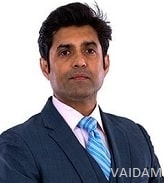
Director, 22 years of experience

Cardio Thoracic Surgeon, Heart Bypass Surgery/ CABG, Valve Repair and Replacement Surgery, Paediatric Cardiac Surgery, Organ Transplant, Robotic Cardiac Surgery
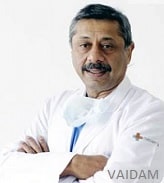
Chairman, 40 years of experience

Cardiology, Cardiovascular and Cardiothoracic surgery
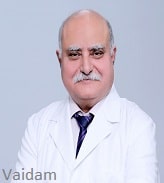
Chairman, 36 years of experience

Cardiovascular & Cardiothoracic Surgery, Off pump Coronary artery surgery (OPCAB), Off pump Total Arterial Revascularization, Paediatric cardiac surgery, Mitral Valve Repair, Aortic Root Replacement
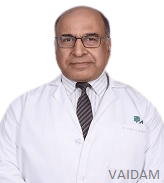
Consultant, 26 years of experience

Cardiology & Cardiovascular Surgery Adult Cardio thoracic Surgery, Diffuse CAD, M V Repair, Vascular Surgery
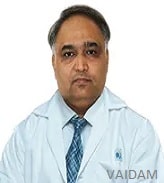
Senior Consultant, 16 years of experience

Coronary Artery Bypass Surgery And Heart Lung Transplant Surgery,Ecmo,Assist Device And Heart Failure Surgery
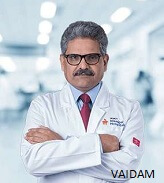
Director, 32 years of experience

Cardio thoracic & cardiovascular Surgery, Minimally invasive cardiac surgery, Robotic surgery, Beating heart coronary artery bypass, Aortic surgery, Redo cardiac surgery
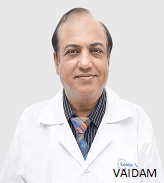
Head of Department, 27 years of experience

CABG, Offpump CABG, Midcab, Redob CABG Mini Invasive & Cosmetic Surgery (CABG, Congenital Heart Defects, Mitral, Aortic, Tricuspid Valve Repair / Replacement, Aortic Root Enlargement, Devised A New Technique, All Types of Congenital Heart Surgery, Ross Procedure, RV To PA Conduits, Fontan Procedure, Cardiothoracic Surgery, Ebstein Anomaly Repair, Devised A New Technique, Aneurysm Surgery, Endovascular and Hybrid surgery, Carotid Artery Surgery, All Types Peripheral Vascular Surgery, All Types of Lung Surgery, Heart and Lung Transplant
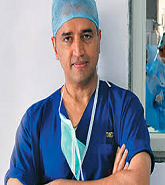
Chairman, 34 years of experience

Cardiothoracic Surgery, Pediatric Cardiac Surgery, Cardiovascular Surgery
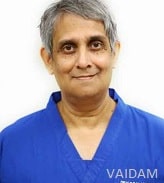
Director, 30 years of experience

End-stage heart failure management (Heart Transplant & VAD implant) Pediatric Cardiac Surgery Lung Transplant
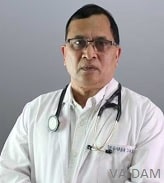
Chief, 36 years of experience

Aortic Valve Surgery, Transcatheter Aortic Valve, Heart Valve Surgery, Implantation TAVI, Heart Valve Replacement, Corornary Artery Bypass Grafting, Heart Transplant
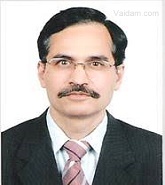
Director, 27 years of experience

Minimally Invasive Cardiac Surgery, Off pump coronary artery bypass surgery, Surgery of ascending aortic aneurysms and dissections, Valve repair and replacement, Carotid endarterectomy, CABG in patients with poor ventricular function, Major Vascular surgery, Surgery for heart failure including heart transplantation and ventricular assist devices
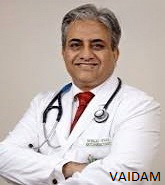
Senior Consultant, 18 years of experience

Cardiologists Cardiovascular Specialists Cardiac Surgeons Cardio/Thoracic Surgeons Cardiovascular Surgeons
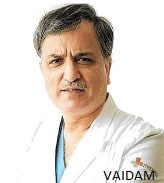
Chairman, 37 years of experience

Pediatric cardiac surgery, Valve repairs, Peripheral Vascular Surgery
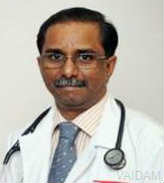
Consultant, 22 years of experience

Aortic Anuerysm Surgery / Endovascular Repair, Vascular Surgery, Mitral/Heart Valve Replacement, Coronary Artery Bypass Grafting, Patent Ductus Arteriosus (PDA)
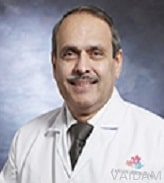
Director, 39 years of experience

Cardiac Catheterisation, Mitral/Heart Valve Replacement, Vascular Surgery, Invasive Cardiac, Cardiac Pacing, Intra - Arterial Thrombolysis, Balloon Mitral Valvuloplasty, Radial Approach Angiography, Patent Ductus Artriosus Device Closure, Mitral/Heart Valve Replacement, Invasive Cardiac, Cardiac Pacing
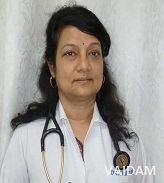
Consultant, 44 years of experience

Peripheral Vascular Disease Patent Ductus Artriosus Device Closure Coronary Angiogram Radial Approach Angiography Balloon Mitral Valvuloplasty Pacemaker Implantation Cardiac Catheterisation Acute Aortic Dissection Primary Angioplasty ASD / VSD Device Closure Implantable Cardioverter-Defibrillators (Icds) Cardioversion Carotid Angioplasty And Stenting Peripheral Angioplasty Coronary Angioplasty / Bypass Surgery
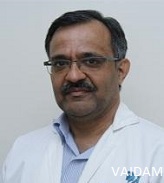
Consultant, 30 years of experience

Off Pump CABG Endovascular Surgery mitral valve repair Minimally Invasive Cardiac Surgery Redo Cardiac Surgery Aortic Anuerysm Surgery / Endovascular Repair Vascular Surgery Mitral/Heart Valve Replacement Coronary Artery Bypass Grafting PCI (Percutaneous Coronary Interventions) Patent Ductus Arteriosus (PDA) Tetralogy of Fallot (TOF) Dextro-Transposition of the Great Arteries (DTGA) Angiogram Open Heart Surgery
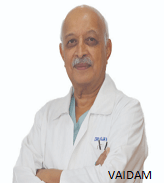
Consultant, 40 years of experience

Peripheral Angioplasty, Balloon Mitral Valvuloplasty, Intra - Arterial Thrombolysis, Pacemaker Implantation, Mitral/Heart Valve Replacement, Coronary Angioplasty / Bypass Surgery, Invasive Cardiac, Cardiac Pacing, Cardio-Thoracic Surgery, Radial Approach Angiography
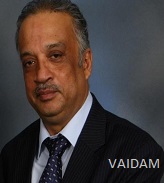
Chairman, 25 years of experience

Off-Pump CABG Without the support of Heart-Lung machine, More than 90% cases. Bloodless Heart surgery. Total Arterial Bypass Grafting Surgery – Off-pump (LIMA RIMA Y). CABG with Endarterectomy. Combined Surgery (CABG + Valve Surgery). Aortic Surgery (Aortic Aneurysm, Aortic Dissection). REDO Surgery (2nd time CABG, Valve Replacement Surgery). Minimally Invasive Cardiac Surgery. Surgery for Heart Failure. Surgery for Adult Congenital Heart Disease. Ventricular Assist Devices. ECMO.
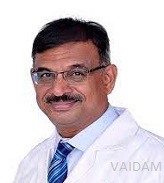
Consultant, 40 years of experience

Bypass Surgery ECMO Cardioversion Aortic Valve Surgery Aorta Surgery Aldosterone inhibitors Blood vessel dilators Left ventricular assist device LVAD Heart valve surgery Infarct exclusion surgery Minimally Invasive Coronary Artery Surgery Thoracic Surgery Keyhole Angioplasty
Our Services for Lvad in India
Transparent - Professional - Without Hassles
LVAD is a mechanical pump that is placed in patient who have got heart failure.This device helps the bottom chamber of your heart for pumping out blood to the ventricle aorta and rest body part. Therefore, it is known as left ventricular assit device.
It cannot replaced your heart, it receives blood from the left ventricle and then deliver it to aorta. LVAD along with left ventricle pumps the blood.
Your doctor may recommend you LVAD when your left ventricle is damaged enough which affects its ability to pump blood, it can be a short term device to keep your heart pumping till you undergo heart transplant.
LVAD is permanent in some critically ill patient whose condition is not eliglible for them to undergo heart transplantation. It is also known as destination therapy.
The purpose of LVAD and pacemaker are different, LVAD helps the heart in pumping the blood effectively, while a pacemaker helps in correcting the irregular or slow heartbeat. Pacemaker generates electrical stimulation which regulated heart beat.
This device is not new, it was invented in 1962 and it was first time implanted in 1966 in a 37 years old patient.
Patients who cannot do any physical activity because of their cardiac disease, they are comfortable only when they are resting.
Yes, LVAD devices are now portable, you can return home with the LVAD and continue your normal activities while waiting for a heart to become available.
This device is implanted during open heart surgery, the pump unit is placed in the chest which is implanted by the surgeon into the apex of heart where it receives blood. A tube is used which delivers blood from aorta which works by pumping blood continuously from left ventricle to aorta. The pump is attached to cable and the controller, the cable passes from the device through the skin on your belly to controller and a small computer is placed outside your body. Controller provides you the message and alarm for helping your operating system.
Cardiac surgeon are specialized in placing LVAD.
It generally takes four to six hours and you'll be asleep during the procedure, so you shouldn't feel any pain during the procedure.
Usually an average life of 5 and half year is seen with LVAD. Mostly 85% patients live one year after they get LVAD and 70-75% patients live for 2 years after LVAD. The maximum life of seven years is seen in a patient of LVAD.
No, you cannot swim with LVAD as it cannot be submerged. There is some hope that an fully implantable device will be made in future with which you can swim easily
Exercises has given multiple beneficial effects on heart failure patients which is expected to improve the quality of life.
Even though LVAD is said to be durable and reliable device its replacement is expected in some patients.
When LVAD fails it leads to bleeding, complications, thrombosis, ischaemic and haemorrhagic strokes, infection and organ failure.
Patient have to stay in hospital for 3-5 days after recovery, most patient remain in hospital for minimum 2 to 3 weeks.






NABH Certified Healthcare Discovery Platform
Vaidam is NABH certified healthcare discovery platform that will connect you to top-notch medical experts, hospitals, wellness options, and trusted travel partners to help identify and make the right healthcare choices.

Researched & Personalized Treatment Plan - Under One Roof
You can search for the best hospitals, read about them, view photographs of the facilities at the hospitals and the places at which the hospitals are located, and check the cost of treatment.

Quality Treatment Within Your Budget
As soon as you post an enquiry, the patient relation team will collect details from you, share them with the doctors and hospitals on Vaidam's panel, and get a personalized treatment plan. We research to get quality treatment within your budget.

Treatment to Travel
Vaidam concierge assists patients, to get medical Visa, the best airline fares and arrangements for your stay. Our concierge also helps you with daily travel, language, and food concerns. Vaidam does everything to be your perfect host. All of Vaidam’s services are free of cost to patients.

International Reach
Vaidam Health has network in 15+ countries, which includes India, Turkey, UAE, Germany, South Korea, Thailand, Malaysia, Spain.
Note: Vaidam Health does not provide medical advice, diagnosis or treatment. The services and information offered on www.vaidam.com are intended solely for informational purposes and cannot replace the professional consultation or treatment by a physician. Vaidam Health discourages copying, cloning of its webpages and its content and it will follow the legal procedures to protect its intellectual property